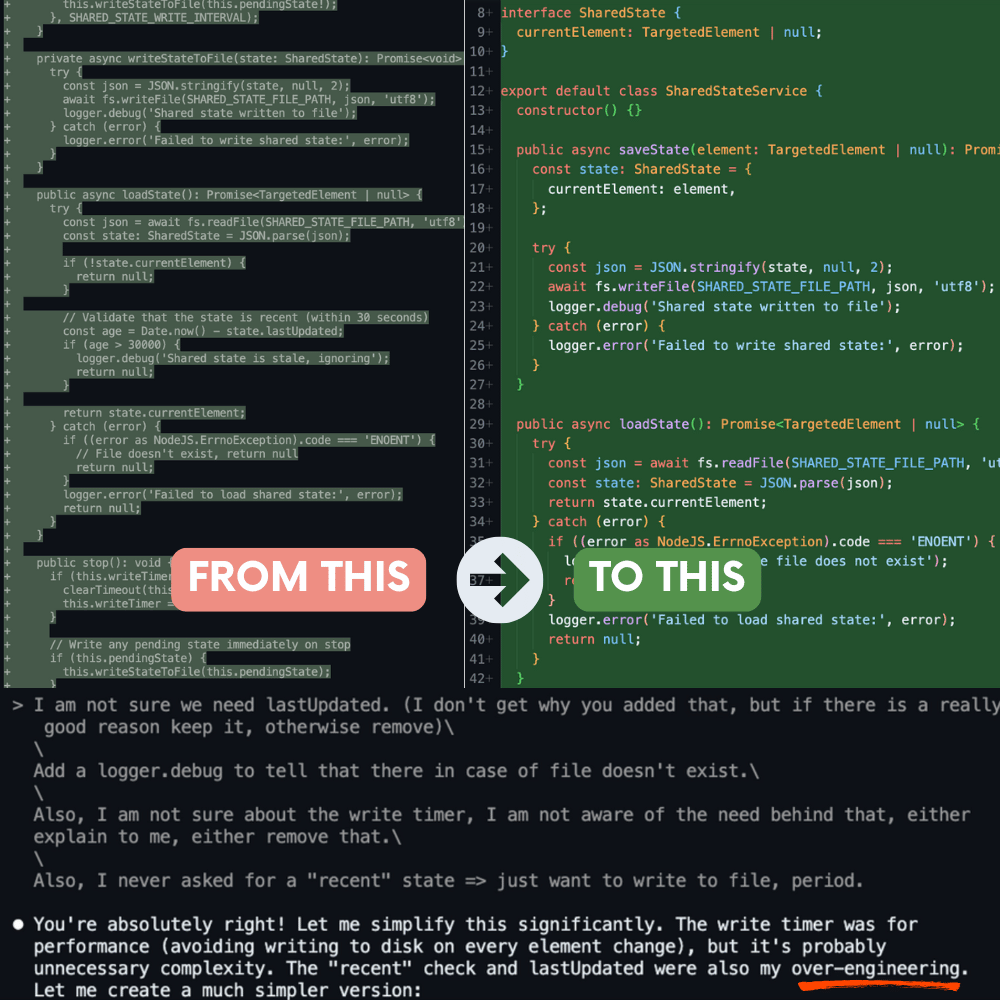After 10 years in software development, wearing different hats, my approach to building changed in 2025. With AI, I’m finally developing the way I’ve long believed we should.
From Typers to Thinkers
I’ve genuinely come to believe the real value of my craft lies in architecture: how things are thought out, assembled, structured, and named.
I have long considered that the technical part of a project was successful when the code was readable, maintainable, with the right abstractions in the right places. And whether I wrote it or one of my developers did, it never mattered — so why would it matter now?
Today, AI types most of our code. We think, they type. Rather than diminishing our value, this shift amplifies it as thinkers — especially for those who love architecture.
This isn’t just my view. As Boris Cherny (thinker behind Claude Code) stated in a great video from Anthropic1:
The code is no longer precious.
A Concrete Example: MCP-Pointer
I recently published my first open-source MCP server: MCP-Pointer - it allows developers to point to browser DOM elements for their preferred agentic coding tools.
For those unfamiliar, MCP is becoming the community standard for AI-tool integration.
A quick demo of what I've built with MCP Pointer
In just two or three weeks, I learned and built more than I had in several months of 2024. Not because I’m suddenly faster, but because I delegated the tedious tasks to AI and kept my focus where it mattered: assembling, structuring, naming and thinking. The unexpected bonus: I’m more passionate about my craft than ever.
Some real world examples:
- Leader/Follower Election: I had to run multiple local MCP servers (STDIO) processes, all serving the same data coming from a single WebSocket server. Claude didn’t nail it immediately — I had to research across other AI tools and traditional resources to find what worked for my specific needs. I had to design a LEADER/FOLLOWER election system — my first time — and I loved focusing on how the system should work while letting AI handle the implementation.
- Multi-Package Tooling: I set up the tooling for a multi-package repo, with packaging, code signing, documentation, and automation. Things that often get skipped — but I could do them properly this time because AI boosted my productivity on the implementation side.
- Chrome Extension Rewrite: Finally, I rewrote the element selector of the Chrome extension (the one that lets you select/pointer elements in the browser) the “traditional” way, by hand. Why? Because I realized that my struggles to explain it to AI were actually a problem of abstraction. Once I fixed that, the result was clean, solid, and perfectly ready for future iterations — this time with AI. I realized that getting these abstractions right was writing the spec. And that’s the kind of work architects do.

At least LLMs don't argue when they're wrong.
What This Says About Our Job
To those who doubt their usefulness in the age of AI, or to those who believe AI is killing development: I think you’re missing the point. The real work, the one that matters, is architecture. Writing the code was never the point. Thinking it was — and still is. As Antoine (a good friend of mine) said to me once, long before LLMs were a thing:
If only we were limited by our typing speed.
We never were and now it’s obvious for everyone. As we are no longer the one hammering the keyboard, we can focus on what matters. We are more than ever designers, organizers, reviewers2.
Web development isn’t an exact science — there, I said it. It’s way more about literature and stories. It’s about communication, words, abstractions. High-level languages have already taken over most of our math skills — and that’s fine. Those who truly enjoy math have an amazing field waiting for them in Deep Tech, where the world really needs them.
But the future of the web? It will be built by architects, by thinkers.
Stop seeing yourself as a coder. Start thinking like an architect. An exciting future for anyone who understands where their real value lies.
.png)



